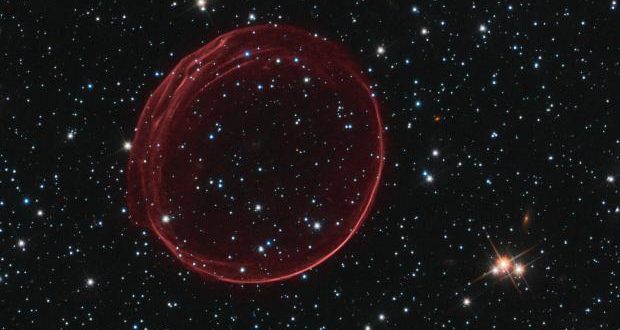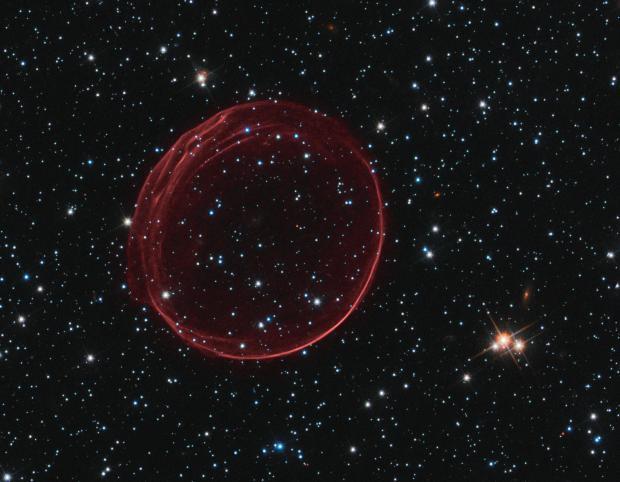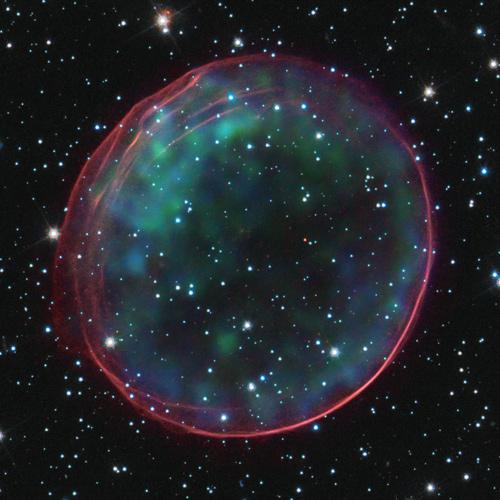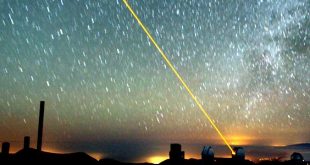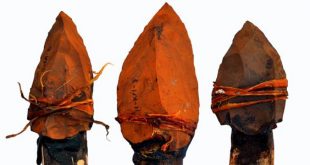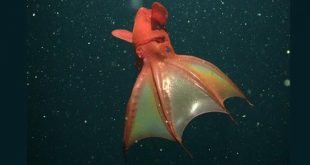After finding no companion star in the type 1a supernova remnant, SNR 0509-67.5, researchers say it was the collision of two white dwarfs that led to the stellar explosion, approximately 400 years ago.
After finding no companion star in the type 1a supernova remnant, SNR 0509-67.5, researchers say it was the collision of two white dwarfs that led to the stellar explosion, approximately 400 years ago.
“To quote Sherlock Holmes: when you’ve eliminated the impossible, whatever remains, however improbable, must be the truth,” Bradley Schaefer, study co-author and researcher at Louisiana State University, told Science-Fare.com. “I’ve ruled out all possible models except one – so it’s got to be that model.”
There are two theories that predict how a type 1a supernova could form. The double-degenerate model involves the collision of two white dwarf stars. The collision causes an explosion, obliterating both stars – leaving just the remnant we’d see today.
However, the single-degenerate model only involves a single white dwarf and a companion star. The companion star gradually transfers it’s mass to the white dwarf until it reaches a critical mass – the Chandrasekhar limit of 1.4 solar masses. Once it crosses that limit, the white dwarf explodes.
Because there’s no collision before explosion, the researchers say, the now ex-companion star should still be around – and should have stellar scars to prove it.
SNR 0509-67.5 is a supernova remnant in the Large Magellanic Cloud. The researchers say, the environment around the supernova offered them the best chance to figure out which is the case.
“It’s a young supernova,” Schaefer said. “We can prove it’s a type 1a, it’s in an uncrowded field and the central region is empty of stars!”
All they were lacking was the photo to measure. While preparing a proposal for Hubble to snap it, the picture they needed serendipitously found them when it showed up on the APOD – Astronomy Picture of the Day – website, nearly one year ago to the day, January 25, 2011.
“Jack Hughes had already taken the picture to study the supernova remnant itself,” Schaefer said. “There’s just another application that you can use the same data for – it’s awesome! wondrous!”
Schaefer printed the photo, found the remnant’s centre using a ruler and had answered one of the largest questions in astrophysics – in less than an hour!
“Of course we confirmed my ruler result using multiple – and far more technical – methods,” Schaefer said. “From this APOD picture, I could disprove all the single-degenerate models, leaving just the double-degenerate model.”
“Within half-an-hour of seeing the APOD picture, I had the answer to one of the top nine questions in all of astrophysics, it was awesome!” He added.
Because this is the first result of this type, Schaefer says it’s possible both models exist – just not in the case of SNR 0509-67.5.
The research was published in the latest issue of the Journal, Nature.
 Science Fare Media Science News – Upgraded
Science Fare Media Science News – Upgraded
